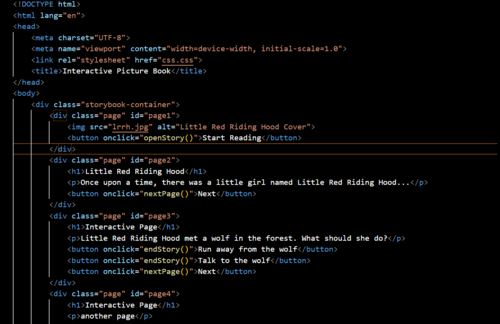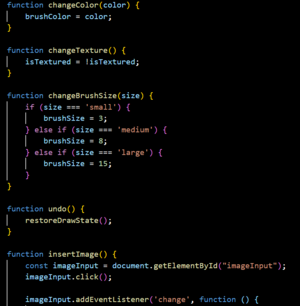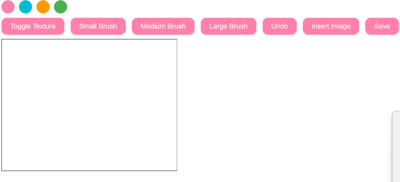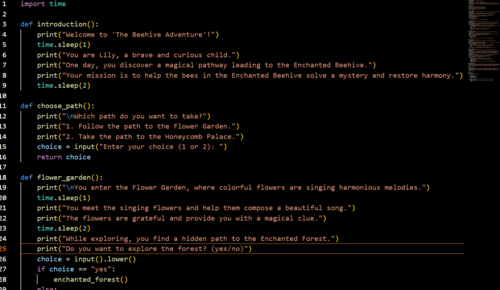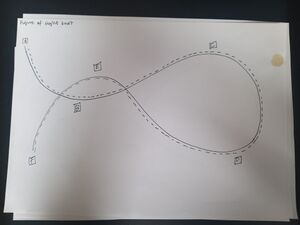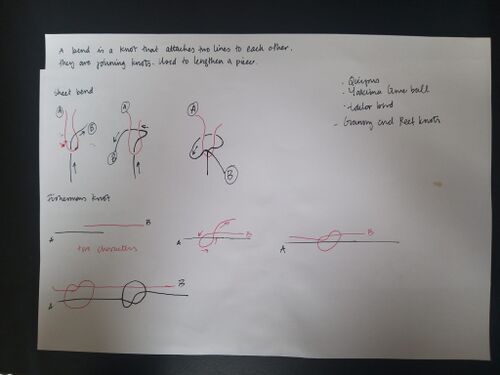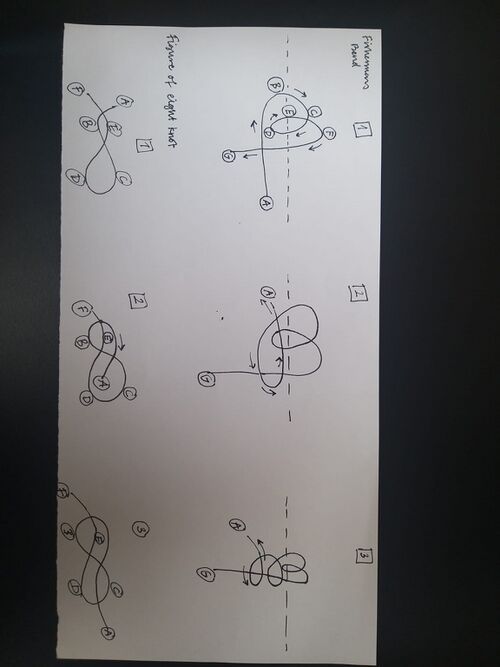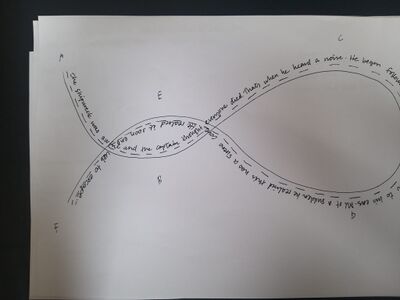GRADUATE MEMOIR: Difference between revisions
No edit summary |
|||
| Line 347: | Line 347: | ||
Philanthropic Foundations: | Philanthropic Foundations: | ||
Explore foundations like the Gates Foundation, Ford Foundation, Rockefeller Foundation, and others that fund education and child-focused projects. | Explore foundations like the Gates Foundation, Ford Foundation, Rockefeller Foundation, and others that fund education and child-focused projects. | ||
= Proposal updated = | |||
Thesis Proposal | |||
The aim is to make a creative writing and reading toolkit to enable children to create their own stories or read the books they want from the library. This web platform is preferably for kids between ages 6-12. Children can explore the library for interactive and multiple ending stories; they can choose to rewrite them or create a brand new narrative. The tools are to write or draw in this section. Templates and prompts will be available to help them get started if preferred. | |||
The purpose of this platform is to encourage love for reading and writing from a young age and to boost creativity. It is also another attempt to make literature fun again by the idea of deconstructing and constructing a piece of text. In today's digital age, children are naturally drawn to technology. Instead of insisting that they keep reading hardover books, this is an attempt to offer new and fun ways for reading and screen time. Project leverages this interest to create an engaging digital platform that aligns with their interests. | |||
The platfrom will be consisting of three sections. Reading, making and gallery. Reading will be including a library of interactive stories and multiple ending stories. Making section will be focused on rewriting an existing story, making a musical score for and existing story or writing from scratch. Here, kids can draw a character and make a simple `choose your own adventure` game. They can add some tunes on the story they create or just write a simple short story. The gallery will be a section to hold and share these stories they create. The reason for showcasing this is that online appearence and characters that kids create can be a way to represent themselves freely in the digital world. For the making part of the platfrom, prompts and templates will be available to get the kids started. Certain characters and narrative structures will be introduced if they like to use. | |||
Throughout the process of making this prototype, child development experts, UX designers and software developers will be very helpfull to get advice adn support from. Child psychologists and development specialists can provide insights into age-appropriate content and activities that support cognitive and emotional growth. UX designers specialize in creating intuitive and child-friendly interfaces that ensure a positive user experience. Skilled software developers and engineers are important for building the web platform, including its interactive features. | |||
The estimated timetable to maket his project is starting from 1st of August 2023 to end of June 2024. August to october will be used to define the scope and objectives of the prototype; making rapid prototypes; drafting a project plan and thinking of an outline accroding to preliminary researach. November to january will be working on a detailed design brief; a platfrom frame where these elements of reading and writing can come together and writing of chapter 1. February to April will be mostly working on the content, interactive stories and writing prompts to go on the platform. Continuing on writing the thesis also by moving to chapter 2. March to may will be mivong on to writing chapter 3 and making the prototype better and hopefully testing the platfrom with kids and getting opinions from teachers and parents. May to june will be the finalizing touches and finishing writing and prototype. | |||
The raletion to my preivous practice | |||
The roject is mainly realted to my previous practice. Through the years I working as a childrens literature editor and translator in publishing houses made me realize certain gaps and pushed me to research on new ways to engage children with literature. Personally I am very much involved in creative writing, deconstruction and construction of narratives, active reading skills, anecdotes, ways of taking notes, media archaeology and inscription. | |||
I have been thinking about building a platform such as this since 2017 when I was working in a publishing house. I didnt yet have enough experience or observation but have realised a gap in this field. Now being a part of XPUB, I can see what I can do or cant do, or can do with more technical support. I am trying to find a common ground where I can meaningfully mash up my ideas on creativity with children. | |||
I have a child development degree as well as design so I am aware of the developmental phases and the ways of approaching this. I feel like there is so much undiscovered territory in childrens literature. | |||
The choices I made to go further in these ideas was to apply to XPUB and stick with researching different creative reading approaches. The second choice was to maket his platfrom focused on creativity and not education. I am aiming to create a free space for users to experiment and play with text and image. The choices to be made along the way are: Will this be only a digital project? Will it be called an interactive ebook or a new term? Will there be adaptation of new picture books or anon tales? Will it be available for peer interaction? How will the online security made? | |||
Revision as of 12:53, 6 November 2023
knotes on knots
symbolism
Knots can serve as powerful metaphors in narration, representing various themes and concepts that can add depth and complexity to a story. conflict and resolution Knots can symbolize different aspects of life, such as complexity, unity, connection, or even entanglement. In a story, a knot can represent a complex problem that the characters need to unravel, whether it's a mystery to solve, a challenge to overcome, or a complicated relationship to understand. Interconnectedness Knots often involve multiple elements intertwined and connected in various ways. In narration, this can represent the relationships between characters, families, or communities. A story can explore how these connections are formed, tested, and sometimes broken, mirroring the process of tying and untying knots. Mystery and Intrigue: Knots are often associated with mystery and puzzles. In a narrative context, knots can be used to create suspense and intrigue. A tangled knot of events or secrets can keep readers engaged, urging them to read on to find out how the narrative threads will be unraveled. Cultural Significance Different cultures have their own traditional knots with specific meanings. Incorporating these cultural knot symbols into a story can add richness and authenticity to the narrative. These knots can carry cultural traditions, values, and beliefs, providing depth to the story's setting and characters. Metaphorical Complexity? Knots can be used metaphorically to convey complex ideas or emotions. For example, a character might feel "tied up in knots" to describe their anxiety or confusion. This metaphorical use of knots can enhance the emotional depth of the narrative and allow readers to empathize with the characters' experiences.
rapid prototypes
Rapid Prototypes influenced by the scratch orchestra
Entry: make your computer screen foggy by blowing on it and save a word on the screen.*Author/sirmak*Datetoday
entry: write a sentence on a piece of paper and make a knot out of the paper. read it outloud with 5 people.*author: suzan*date:whenever but urgent
Entry: listen to the reading aloud of the above sentence knot. Try to write/draw the knot sentence as a way of untangling it.*author: suzan remixed by stephen*date:whenever but urgent
Entry: find one sentence in your bag and read it outloud in 2 seconds. ask other to repeat this sentence.*author: suzan*date: today
Entry: take 10 seconds, during this time think about your worst memories and make knots for each of them on a piece of string. *author: suzan*date: 17.05.2023
Entry: take 10 more seconds, during this time think about your best memories and unmake the knots for each of them on a piece of string. *author: suzan*date: 17.05.2023
Entry:find a long string and four people. hold the string next to each other and try to make one knot (each one or one in total) at the same time.dont decıde beforehand.*author:ırmak*date: when you are ready
Entry: find 10 words in one of the tabs in your computer and form a 4 sentence love letter with them in 2 minutes.*Author ırmak*Date forever*medium (text, visual, sound, performance, code) text
Entry: walk out of the aquarium, into the studio from the main door and back into the aquarium. describe every detail you saw to people in the room.*Author suzan*Date 17.05 16:00*medium (text,visual, sound, performance, code) verbal (or transcription? recording?) yes
Entry: everyone photocopy their hands and puts them in the copies on the table. Whoever guesses the right hand and copy will recieve a firm handshake from that person. duration max 2 min.*Author suzan*Date 17.05 medium (visual, sound, performance, code) performance
Entry: one person closes their eyes and holds a pencil. other people around this person will try to lead them into drawing an apple. But one person will mislead. *Author suzan*Date today*medium (visual, sound, performance, code) visual
Entry: half of the people in the room will close their eyes and half of them will lead them around the room. if someone bumps into each other or an object you will stop.*Author irmak*Date today*medium (visual, sound, performance, code) performance
Entry: find a music score and make knots at the times where the music changes or how you feel when listening changes. Write a short story with sentenceses limited to the number of knots in the string.
(K)not Theory and some (K)not Stories
-What?
A series of one sentence (k)not stories that are based on various types of knots.
Why Make it?
I would like to connect the knot theory to fiction and see if two different tecniques have a common ground. I would like to approach fiction in a non linear and less autonomous way.
Workflow
-research knot theory and history
-see Andian Khipus and Yakime Timeball.
-see if i can connect the knots to collective memory tellings or oral folktales.
-try different materials to make knots with.
-examine the rlation to grammar
-make ptototypes of the same sentence with different knots.
-expand the sentences to stories
-play with telling a story and knotting and find ways to make interactive
Rapid Prototypes
Refs Decorative Newsfeeds: https://www.thomson-craighead.net/decnews.html
R. D. Laing: Knots (1970)
outcomes so far:
Different types of bends are used to join two strings. These tecniques have different histories.
It is hard to make complicated knots with paper. Fabric is ok. Transparent paper doesnt last.
1.Knot theory equivelance problem
2.Knot polynomials/Alexander polynomials
-every knot can be represented as a closed braid
three dimensional media to store data.
same knot different sentence/different sentence same knot/same knot same sentence.
how to expand this from sentence to fiction. Look into written language and oral tradition in civilisations.
Knots: hold, join, manifacture, secure, pull, gather
Sesh2
proposal
What?
Creative Writing Toolkit
-Kid-friendly writing, reading and drawing tools that enable children to create their stories and illustrations.
-Templates for guided story creation, including prompts and visual cues.
-Reading Rewards and Progress Tracking Community and Sharing:
-A safe and moderated online community where kids can share their stories and artwork with peers. (dont know how to do this)
-Encouragement and positive feedback from other users to boost confidence and social interaction.
How It Works:
Exploring Stories:
-Children can browse the library of interactive stories.
-They choose a story to read or have it read to them.
-Interactive elements within the story engage them in the narrative.
-you can listen the story from different cahracters' perspectives.
Creative Writing:
-Kids can use the writing and drawing tools to create their stories.
-Templates and prompts (on knots and poetry as well) help them get started.
Rewards and Progress:
-Completing stories and creative writing exercises earns rewards and badges.
Benefits:
-Encourages a love for reading and storytelling from a young age.
-Fosters creativity and imagination through writing and drawing activities.
-Supports early literacy skills development.
-Offers a safe and moderated online environment for social interaction.
How?
Concept and Planning:
-Define the core objectives and educational goals of the tool.
-Identify the target age group (5-7,7-10 years) and their specific needs.
-Research existing digital tools for kids and analyze what works well and what can be improved.
Content Development:
-Develop a library of interactive stories with engaging visuals and age-appropriate narratives.
-Create templates and prompts for the creative writing toolkit.
-Focus on vibrant colors, large icons, and simple navigation. Approach this theough a media archaeology sense as well. (Interactive CD ROM and sensory games)
-Conduct usability testing with kids to refine the design.
Development:
-Develop the interactive reading and writing features, including drawing tools.
Why?
Promotes Early Literacy: Early literacy is essential for a child's cognitive development. This Project aims to foster a love for reading, storytelling, and creative writing from a young age, which can lay a strong foundation for literacy skills later in life.
Encourages Creativity: Creative thinking and expression are vital skills for problem-solving and innovation. This project empowers children to use their imagination and creativity through writing and drawing activities.
Engages Children in Learning: In today's digital age, children are naturally drawn to technology. Project leverages this interest to create an engaging and educational digital platform that aligns with their interests.
Supports Parents and Caregivers: The platform could include a parental dashboard that allows adults to actively engage in their child's learning journey.
Promotes Social Interaction:?? The online community aspect of the Project encourages children to share their work, receive feedback, and engage with others, promoting social interaction and communication skills.
Accessibility and Inclusivity: By designing the app with accessibility features in mind, the platform can cater to a broader audience, including children with disabilities, ensuring inclusivity.
Positive Screen Time: In a world filled with screens, it offers a positive screen time option for children, addressing concerns about excessive screen use.
Who can help?
Child Development Experts:
Child psychologists and development specialists can provide insights into age-appropriate content and activities that support cognitive and emotional growth.
User Experience (UX) Designers:
UX designers specialize in creating intuitive and child-friendly interfaces that ensure a positive user experience.
Software Developers:
Skilled software developers and engineers are essential for building the mobile app and web platform, including its interactive features.
Funding and Investors:
Seek investors or funding organizations interested in supporting educational and child-focused projects.
Parent and Child Testers: Parents and children can participate in testing and user feedback sessions to ensure that the app meets their needs and expectations.
Support with building interactive digital environments and testing them. Been talking to my UX designer friend who is also a Publisher about this and also Youngsung Chi will be my mentor in this journey.
Timetable:
Month 1-2: Project Initiation and Planning
-Define the scope and objectives of the prototype.
-Conduct initial research on child development, competitor analysis, and design trends.
-Make rapid prototypes
-Draft a project plan, including a rough timeline :D
-Start identifying potential funding sources or grants.
-Think of an outline for thesis, according to your preliminary research.
Month 3-4: Concept and Design
-Brainstorm and refine the core concept of the project.
-Create a detailed design brief, including wireframes and mockups.
-Start designing the user interface (UI) and user experience (UX) for the prototype.
-Begin drafting a proposal for prototype development.
-Finish setting limitations and begin writing the first chapter.
Month 5-6: Content and Features
-Develop a limited set of interactive stories and creative writing activities.
-Build a simplified version of the reading and writing features.??
-Include basic drawing and writing tools.
-Consider incorporating a single interactive element in the stories.
-Continue writing.
Month 7-8: Prototype Development
-Start building the prototype, focusing on core functionality.
-Create a working model of the web platform.
-Test the prototype internally for usability and functionality.
-Begin preparing for user testing and workshops.
-Continue writing.
Month 9-10: User Testing and Feedback
-Conduct user testing with a small group of children and parents.
-Collect feedback on the prototype's usability, design, and engagement.
-Finalize and the thesis?
Month 11-12: Prototype Presentation and Documentation
-Document the prototype development process, including design choices and lessons learned.
-Explore opportunities to continue prototype testing and development.
Relation to previous practice:
working as a childrens literature editor and translator in publishing houses made me realize certain gaps and pushed me to research on new ways to engage children with literature. Personally I am very much involved in creative writing, deconstruction and construction of narratives, active reading skills, anecdotes, ways of taking notes, media archaeology and inscription. I think these have been a build up fort his.
I have been thinking about building a platform such as this since 2017 when I was working in a publishing house. I didnt yet have enough experience or observation but have realised a gap in this field. Now being a part of XPUB, I can see what I can do or cant do, or can do with more IT support. I am trying to find a common ground where I can meaningfully mash up my ideas on creativity and children.
I have a child development degree as well, so I am aware of the developmental phases and the ways of approaching this.
choices made: first choice made so far is to go for this. the second is to make this a creativity tool not an education tool. I am aiming to create a free space for users to experiment and play with text and image.
to be made: will this be only a digital project? will it be called an interactive ebook or a new term? will there be adaptation of new picture books or anon tales? will it only be a reading tool or will there be room for writing, making and peer interaction. Relation to a larger context:
My aim with this research and prototype is to continue further in the upcoming years and hopefully make it public with fundings and grants. This is what I dream and its a good opportunity to see if the platfroms works as I imagine it would.
I like how its different from current interactive book platforms where the reading is mainly supported by some moving elements and limited interactivity. I am keen to explore the writing tools in this platform where reading and writing could go hand in hand. Where they both can support the childs interest.
examples and sources:-piboco-noveleffect-bookr-kotobee-stepinbooks-dribbble
Possible grants and options:
Early Childhood Education Grants: U.S. Department of Education Early Learning Challenge Grants Kellogg Foundation's Early Childhood Education Grants W.K. Kellogg Foundation's Family Engagement Grants Technology Innovation Grants: Google for Education Grants Microsoft Philanthropies Education Grants Bill & Melinda Gates Foundation's EdTech Grants Early Childhood Development Grants: Buffett Early Childhood Fund Grants PNC Foundation's Grow Up Great Grants The Bezos Family Foundation's Early Learning Grants Literacy and Reading Grants: The Dollar General Literacy Foundation's Youth Literacy Grants Reading Is Fundamental (RIF) Community Literacy Grants Scholastic Book Clubs and Reading Club Grants STEM/STEAM Education Grants: National Science Foundation (NSF) STEM Education Grants LEGO Foundation's Playful Learning Grants National Girls Collaborative Project (NGCP) Mini-Grants Parental Engagement Grants: Annie E. Casey Foundation's Family Engagement Grants National PTA Family Engagement Grants Parent-Teacher Associations (PTAs) and Parent-Teacher Organizations (PTOs) often offer local grants. Community and Social Impact Grants: KaBOOM! Play Everywhere Challenge Grants (for projects promoting play and social interaction) KIDS in the GAME Grants (for youth sports and fitness programs) Digital Learning and EdTech Grants: Digital Promise Education Innovation Clusters Chan Zuckerberg Initiative Education Grants EdSurge Digital Learning Grants Database Child Welfare Grants: Casey Family Programs Grants (focused on improving the child welfare system) Child Welfare League of America (CWLA) Grants Government Grants: Check with federal, state, and local education departments and agencies for relevant grant programs, which can vary by region. Startup and Innovation Competitions: Y Combinator (startup accelerator program) TechCrunch Disrupt (startup pitch competition) Global EdTech Startup Awards (GES Awards) Corporate Social Responsibility (CSR) Programs: Many major corporations have CSR programs; research companies with a history of supporting education and child development initiatives. Philanthropic Foundations: Explore foundations like the Gates Foundation, Ford Foundation, Rockefeller Foundation, and others that fund education and child-focused projects.
Proposal updated
Thesis Proposal
The aim is to make a creative writing and reading toolkit to enable children to create their own stories or read the books they want from the library. This web platform is preferably for kids between ages 6-12. Children can explore the library for interactive and multiple ending stories; they can choose to rewrite them or create a brand new narrative. The tools are to write or draw in this section. Templates and prompts will be available to help them get started if preferred.
The purpose of this platform is to encourage love for reading and writing from a young age and to boost creativity. It is also another attempt to make literature fun again by the idea of deconstructing and constructing a piece of text. In today's digital age, children are naturally drawn to technology. Instead of insisting that they keep reading hardover books, this is an attempt to offer new and fun ways for reading and screen time. Project leverages this interest to create an engaging digital platform that aligns with their interests.
The platfrom will be consisting of three sections. Reading, making and gallery. Reading will be including a library of interactive stories and multiple ending stories. Making section will be focused on rewriting an existing story, making a musical score for and existing story or writing from scratch. Here, kids can draw a character and make a simple `choose your own adventure` game. They can add some tunes on the story they create or just write a simple short story. The gallery will be a section to hold and share these stories they create. The reason for showcasing this is that online appearence and characters that kids create can be a way to represent themselves freely in the digital world. For the making part of the platfrom, prompts and templates will be available to get the kids started. Certain characters and narrative structures will be introduced if they like to use.
Throughout the process of making this prototype, child development experts, UX designers and software developers will be very helpfull to get advice adn support from. Child psychologists and development specialists can provide insights into age-appropriate content and activities that support cognitive and emotional growth. UX designers specialize in creating intuitive and child-friendly interfaces that ensure a positive user experience. Skilled software developers and engineers are important for building the web platform, including its interactive features.
The estimated timetable to maket his project is starting from 1st of August 2023 to end of June 2024. August to october will be used to define the scope and objectives of the prototype; making rapid prototypes; drafting a project plan and thinking of an outline accroding to preliminary researach. November to january will be working on a detailed design brief; a platfrom frame where these elements of reading and writing can come together and writing of chapter 1. February to April will be mostly working on the content, interactive stories and writing prompts to go on the platform. Continuing on writing the thesis also by moving to chapter 2. March to may will be mivong on to writing chapter 3 and making the prototype better and hopefully testing the platfrom with kids and getting opinions from teachers and parents. May to june will be the finalizing touches and finishing writing and prototype.
The raletion to my preivous practice
The roject is mainly realted to my previous practice. Through the years I working as a childrens literature editor and translator in publishing houses made me realize certain gaps and pushed me to research on new ways to engage children with literature. Personally I am very much involved in creative writing, deconstruction and construction of narratives, active reading skills, anecdotes, ways of taking notes, media archaeology and inscription.
I have been thinking about building a platform such as this since 2017 when I was working in a publishing house. I didnt yet have enough experience or observation but have realised a gap in this field. Now being a part of XPUB, I can see what I can do or cant do, or can do with more technical support. I am trying to find a common ground where I can meaningfully mash up my ideas on creativity with children.
I have a child development degree as well as design so I am aware of the developmental phases and the ways of approaching this. I feel like there is so much undiscovered territory in childrens literature.
The choices I made to go further in these ideas was to apply to XPUB and stick with researching different creative reading approaches. The second choice was to maket his platfrom focused on creativity and not education. I am aiming to create a free space for users to experiment and play with text and image. The choices to be made along the way are: Will this be only a digital project? Will it be called an interactive ebook or a new term? Will there be adaptation of new picture books or anon tales? Will it be available for peer interaction? How will the online security made?
Sesh3
Outline-Three key issues/tricky issues/tricky shoes
1.Interactivity *monkey's fist or carrick bend knots
In this first chapter I will be talking about the limits and uses of interactivity and will be giving examples on interactive reading and writing. Then I am planning on how to implement this with kids.
Interactive and creative reading/writing experiences and the limits of inclusivity in narratives for children.
-media archaeology perspective of interactive media (cd roms, games, sensory boards etc)
-differences in experience when reading aloud, alone or with someone.
-The joy of destruction
-storytelling with words, knots, images, drawing, sound, gestures.
-crossing the border of writer and reader.
-the limits of deconstructing a text and deauthorizing the author
-the simultaneous act of writing and reading
2. Knots *figure8 knot
implementation of knots and knot theory in creative writing, reading and making according to the interactivity levels in certain ages.
-pedagogical approach
-limitations
-differences from already existing ebook platforms?
-why knots and the relation of knots to reading and writing culture.
3. Digital Platforms *crown knot or splice knots
childrens interaction with digital platforms and ways of making screentime effective and social.
-smudging the boundary between childrens ebook and storytelling games.
-what do we learn from narrative, open ended and multiple ending games.
-Why do we have less modes of reading and writing for children when compared to adults?
format
I want to write about the project interactively (somewhat like a text based game) and make the thesis with multiple endings according to the readers choice at certain bending points.
Since the Project is including knots and I have developed a personal interest in using knots as a form of structuralising ideas and information, there will be a relation to knots in the thesis itself. knots will represent the experiences that raise intersting opportunities for research and distinct events I went through as making the project, strings will represent theories and approaches that I have on these events and bends will be representing the relation between these and my own experiences/motivations. Hitches will be what connects strings (theories and approaches)to a specific element in the project.
The three chapters will be formed according to different knots, depending on the subject and the writing will be based on the structure and usage of this knot.
Apart from this, for my own research preferences, I am planning on documenting this years process of writing and researching using the Incan Quipu method which was historically used to archive information, using multiple strings of different colors, knots to represent analytic memory and historical events.
bibliography:
An Anthology of Concrete Poetry- to be inspired by shapes and loops of writing.
Raymond Queneau-Exercises in Style- understanding the versions of telling the same story
mindstorms-children, computers and powerful ideas- to get a better idea on child computer interaction
J L Austin-How to do things with Words - on how to experiment and be limitless with words.
prototyping
javascript and interactivity trials
I made a prototype for a drawing pad. It seems to be working. Choosing colors, medium/small and large brush choices. Importing an image and sacein are also options. This took a long time because i followed a tutorial and customized everything basically. Now i would need to find a way to implement this in the web platform of the interactive story itself.
My main goal is to maybe use the drawing pad as a `create your own adventure` option. The user can draw a scene or paint on an existing image and progress the story like this by adding frames to it. Another option could also be writing a musical score or a jingle for the story or even small sound effects.
text based game
I tried composing a multiple ending small story using twine. It was a good prototype and warm up to get used to building an interactive story.
### Title: The Beehive Adventure
#### Introduction:
- Introduce the main character, a curious and brave child named Lily, who discovers a magical pathway leading to the Enchanted Beehive.
- Set the scene: The Enchanted Beehive is a magical realm where bees talk, flowers sing, and honey holds extraordinary powers.
- Present the main goal: Lily needs to help the bees in the Enchanted Beehive solve a mystery and restore harmony to their kingdom.
#### Plot Points:
##### 1. The Magical Path:
- Lily discovers a magical pathway in her backyard that leads to the Enchanted Beehive.
- Along the way, she meets a friendly butterfly named Flutter, who guides her to the bee kingdom.
##### 2. Meeting Bee Friends:
- Lily encounters talking bees, singing flowers, and a wise Queen Bee, each possessing unique abilities.
- Each bee friend provides a clue or a challenge that Lily must solve to proceed further in the Enchanted Beehive.
##### 3. Choosing Paths:
- At various points in the story, Lily reaches crossroads and must decide which path to take within the Enchanted Beehive.
- Each path presents different challenges, puzzles, and characters to interact with.
- The choices made by the reader influence the outcome of the story.
##### 4. Facing Challenges:
- Lily faces challenges like decoding bee dances, helping lost butterflies find their way, and protecting the honey supply from mischievous creatures.
- Each successful challenge brings her closer to solving the mystery.
##### 5. Climax:
- Lily discovers a plot by a group of mischievous ants to steal the Enchanted Honey and cause chaos in the bee kingdom.
- Depending on the reader's choices, the confrontation with the ants can have different outcomes.
##### 6. Multiple Endings:
- There are multiple endings based on the choices made by the reader:
- Ending 1: Lily and her bee friends successfully thwart the ant plot, restoring peace and harmony to the Enchanted Beehive.
- Ending 2: Lily faces challenges but learns valuable lessons, promising to return and help her bee friends again in the future.
- Ending 3: Lily befriends the ants, finding a peaceful resolution and teaching everyone the importance of cooperation.
#### Conclusion:
- Wrap up the story based on the chosen ending, emphasizing the lessons learned and the friendships made during the adventure.
- Encourage readers to revisit the story and explore different paths to discover alternative endings.
workshop ideas
knots real life
Create a Knot-Story Bracelet: Provide children with colorful strings or yarn and teach them a simple knot-tying technique (e.g., square knots). Assign each knot a specific meaning or element of a story (e.g., a square knot represents a character, a half-hitch represents an event). Encourage kids to create a story by tying knots in a specific sequence, with each knot representing a different part of the story. As they create their bracelet, they can narrate their story aloud, describing the plot and characters associated with each knot.
Treasure Map Adventure: Introduce the concept of a treasure hunt adventure. Provide children with a "blank" treasure map (paper with a simple map outline). Instruct them to write a creative story where each location on the map corresponds to a part of their adventure. Kids can tie knots or use different symbols to mark important locations on the map, and then write descriptions of what's happening at each spot.
Story String Scavenger Hunt: Prepare a long piece of string or yarn with knots tied at regular intervals. Hide clues or riddles in various locations around the house or yard. Children follow the string, untying knots and solving clues as they go. At each knot or clue point, they can jot down a sentence or two to add to their unfolding story.
Knot-tying Character Portraits: Provide kids with a selection of colorful cords and knots. Instruct them to choose a character from a book or create their own character. Encourage them to use knots to represent different characteristics or traits of the character (e.g., a square knot for bravery, slipknot for curiosity). As they tie knots, have them write short descriptions of the character's attributes next to each knot.
Knot Storytelling Relay: Divide children into teams or pairs. Provide each team with a long piece of rope with knots spaced along its length. Each child adds a sentence to an ongoing story, with each sentence corresponding to one of the knots. They must tie the rope into a simple knot after their sentence. The next child in line continues the story at the next knot. These interactive creative writing activities not only engage kids in storytelling but also enhance their fine motor skills through knot-tying. They offer a creative and hands-on approach to writing, making the process enjoyable and memorable for young writers.
knots digital
Writing activities with knots (digital):
Create a Knot-Story Bracelet: Design a virtual bracelet-making tool where kids can choose different colors of digital strings and tie knots using a simple drag-and-drop interface. Create a storyline template with knots representing story elements, and allow kids to customize it by selecting different knots for characters, events, and settings. Add a narration feature where kids can record or type their story while interacting with the virtual bracelet.
Treasure Map Adventure: Develop an interactive map on the web platform where kids can click on different locations to write and store their creative story elements. Include an option to draw or add symbols to mark important locations on the virtual map. Enable kids to connect the knots or symbols on the map to create a visual representation of their adventure story.
Story String Scavenger Hunt: Build a digital scavenger hunt game where kids follow a virtual string that leads to clues and riddles placed throughout the digital environment. Allow kids to click on knots or clues to reveal additional story information and prompts. Integrate a writing tool so that kids can write responses and continue their story as they progress through the scavenger hunt.
Knot-tying Character Portraits: Create a character customization tool where kids can design and name their characters, assigning knots to represent different character traits. Incorporate a digital knot-tying interface where kids can tie virtual knots and attach them to their character profiles. Provide a space for kids to write character descriptions and stories featuring their characters.
Adventure Diary with Knot-coded Entries: Develop a digital diary platform with a built-in knot-coding system. Enable kids to type or select letters to encode text into knots and add entries to their digital diary. Allow for multimedia integration, so kids can include images, audio, and video in their diary entries.
writing
- Workshop Duration:** 20 minutes
- Introduction (5 minutes):**
- Welcome participants and introduce yourself briefly. - Explain the concept of the workshop: exploring creativity through poetry and knots, emphasizing the symbolic connection between words and knots. - Discuss the significance of knots in various cultures, representing unity, strength, and interconnectedness. - Emphasize the importance of creativity and self-expression.
- Icebreaker Activity: Name Knots (5 minutes):**
- Provide each participant with a long piece of string or yarn. - Instruct participants to tie a knot in the string that represents their name.
- Poetry and Knots Exercise (7 minutes):**
- Distribute sheets of paper and pens to participants. - Introduce a short poem or a few lines of poetry related to knots, such as "The Knots Prayer" by R.D. Laing or any other poem that resonates with the theme. - Discuss the emotions and imagery evoked by the poem. - Instruct participants to write a short poem or haiku inspired by the theme of knots. Encourage them to explore metaphors and symbolism related to knots in their poetry. - Allow 5-7 minutes for participants to write their poems.
- Sharing and Reflection :**
- Invite participants to share their poems with the group, encouraging a supportive and respectful atmosphere. - After each participant shares their poem, ask the group to reflect on the imagery and emotions conveyed in the poems. Discuss how different knots were used as metaphors and symbols in the poetry.
- Closing Activity: Knotting Together (1 minute):**
- Ask each participant to stand in a circle. - Instruct participants to tie their string together with the person next to them, ask them to create a "knot"
make the poem into one string make the poem into different strings without order make empty string
ask people to add the sentences using knots. they can add sentences' if they like.
2. print out knot drawings. ask the person to fill in these knots using the poem they have. circles/sentences/knots

